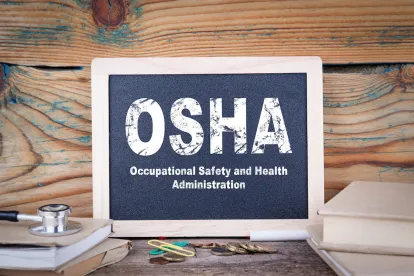You might be surprised to learn that the Occupational Safety and Health Administration (OSHA) enforces 22 different whistleblower protection laws. This includes laws governing workplace safety and health at construction, manufacturing, energy generation or distribution and other worksites. It also includes a broad array of laws that regulate hazards and prohibited activities specific to airlines, motor vehicle carriers, nuclear facilities, railroads and maritime and other industries.
These laws prevent employers from retaliating against employees who engage in protected activities, such as reporting workplace hazards, injuries, illnesses or potential violations of the law. They can also protect employees who refuse to violate a law or engage in a hazardous activity.
While employees may report violations to their employers, they may also go directly to OSHA. Employers may not prevent an employee from doing the latter, even if the employee declines to notify a manager or Human Resources. When an employee complains to OSHA, the employer may not take an adverse action that may intimidate or dissuade employees exercising their right to blow the whistle on suspected wrongdoing. Adverse actions may include acts such as termination, layoff, demotion, discipline, threats, blacklisting, reassignment to a less desirable position, reduction of hours, isolation, poor performance reviews, or denial of overtime, promotion or benefits.
In its Recommended Practices for Anti-Retaliation Programs, OSHA advises employers to design and implement programs to (1) receive and respond to employee reports of noncompliance with safety and health or other laws and (2) prevent and address retaliation against employees who voice concern. This extends not only to regular employees, but also to temporary employees, leased workers and contractors, especially those who are controlled by the host employer.
A key best practice OSHA suggests is training employees about their right to report issues without delay to OSHA or an appropriate agency. The agency may be well aware that a report was filed a disgruntled current or former employee, but OSHA must still follow up on a complaint without regard to the aims of the complaining employee. Showing the agency a training regimen that reinforces employee rights can send a positive signal to an investigator who may be unsure of your workplace culture.
OSHA suggests an anti-retaliation program that includes five elements:
- Committed managers who lead by example, encourage employees to report concerns and respect confidentiality;
- A clearly communicated system for resolving employees’ reported concerns;
- A system for receiving and responding to reports of retaliation;
- Anti-retaliation for employees and managers; and
- Program oversight, which may include regular monitoring or audits that identify your program’s strengths and weaknesses.
OSHA offers a few ways to accomplish these objectives, such as multiple confidential or anonymous channels for complaints, follow up interviews with complaining employees, and anonymous surveys of employees to assess your program. OSHA also recommends incentive programs that reward employees for reporting concerns. Top-level managers should be in the know on the results of these measures and engage employees to find ways to improve whistleblower programs.



 />i
/>i
